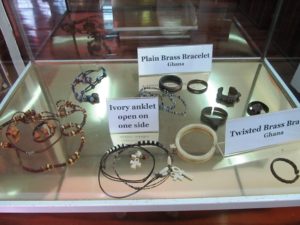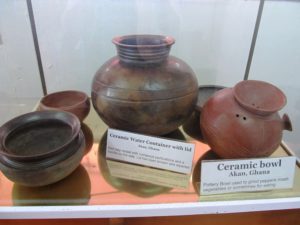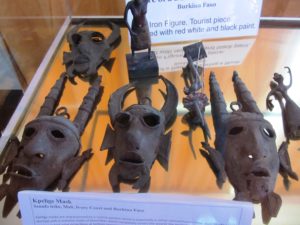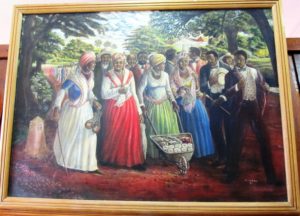
The African Museum of Heritage in Barima Avenue, Bel Air Park, Georgetown is said to be the first of its kind in the Caribbean, and there are many fascinating artefacts on exhibition at the museum that tells of our historical and cultural connections to Africa.
The exhibits include paintings as well as everyday items and ceremonial artefacts that symbolize mostly West African art in daily African life and culture: from combs to iron and wooden masks to the carved door and sculptures.
A visit to the museum will prove worthwhile for many students or persons interested in African art and history.
One of the many interesting artefacts on display is the group of Kpelige masks. According to the museum, these are characterised by a central portion, which is essentially a natural human face. Such masks are worn with a costume made of plant fibre, which completely covers the wearer. The projections on the sides of the face represent bird wings and projections at the bottom represent legs.

The lower lip has been pierced by a lip labret or plug. The top of the mask has horns symbolising power. A bird at the top represents the clan emblem of the people who performed with it.
Brass weights used for measuring gold dust, drums, musical instruments, games and clothing are just a few of the museum’s many captivating exhibits.
Originally called the Museum of African Art and Ethnology, the Museum was established in 1985 with the purchase of collections of African art from Hubert H. Nicholson, owner of the building that currently houses the African Museum, and

Desiree Malik.
These collections were annotated and accessioned through UNESCO by Dr William Seligman, Curator of African and Oceanic Art, Brooklyn Museum.
In 2001, the Museum of African Art and Ethnology was renamed the Museum of African Heritage in order to open its doors to a wider audience and address the African experience in Guyana.
Much of the art in the collection are examples of the kind of art objects found in West Africa, and help to educate us as to the meanings and reasons behind African art traditions.
Some of the exhibits came from Africa, brought directly to Guyana by Nicholson.

In celebration of Emancipation 2017, the Museum of African Heritage will host exhibitions and support speakers who travel from village to village to give talks on the history of Emancipation, the Village Movement and other important historical topics.
Opening hours are Mondays to Thursday from 8:00am to 4:30pm. Call 226-5519 for more information.



